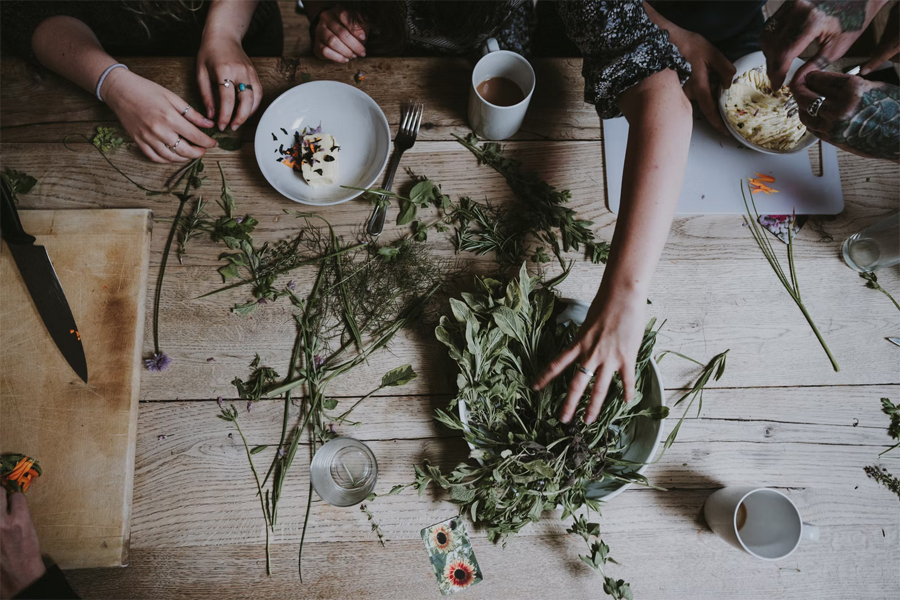
Start Early
Plants, like most natural elements, thrive best when seasons are taken into account. You might be surprised to learn that ideal herb planting begins in late winter. Almost always, you’re going to be germinating your seeds indoors and then moving them outside once the threat of frost is gone. Alternatively, you can keep your herbs indoors all year round. This means that you should probably be getting ready to start gardening somewhere around the end of February or the beginning of March, depending on the climate in your area. Of course, if you’re reading this in June, that’s okay too. It might simply mean your growing season will be a little shorter.
Secure Your Supplies
Once you’re aware of your timeline for planting, you can begin seeking out supplies. You’ll likely need a container (or multiple containers if you’re going hardcore), your seeds, and some seed-starting soil or high-quality potting soil. Wherever possible, go for organic, non-GMO options as these tend to produce better tasting herbs and spices and also reduce some of the negative impacts that come along with conventional farming practices.
Choose Your Seeds
When selecting your seeds, there are a few considerations you might want to keep in mind. First and foremost, make a list of the herbs and spices you like to eat and cook with. If you love minty deserts, try growing mint from seed. If you love chamomile tea, grow that. Using your personal tastes is an excellent way to get started in your herb selection.
If you still have space or are looking to experiment, take some time to research the herbs that promote the areas of health that you value or are currently working on. Chamomile, cilantro, echinacea, fenugreek, holy basil, lemon balm, licorice root, oregano, parsley, passionflower, Rhodiola, rosemary, and sage all help reduce inflammation in the body, which can help people suffering from chronic pain or arthritis. Elderberry, garlic, astragalus root, olive leaf, oregano, and sage all function as antiviral forces within the body, boosting your immune system and combatting viruses. Ginkgo Biloba, Rhodiola Rosea, lavender, Panax ginseng, and tulsi all help reduce anxiety. Once you open your mind to the benefits that herbs and spices can have, you’ll be looking for new ways to incorporate them into all your favorite meals.
If you’ve found that you have too many herbs you want to grow for the space you have, you can narrow down the list by researching their preferred growing environments and the ease of cultivation. You can also figure out how long they take to produce full plants. Choose the herbs that are easier to grow or more responsive to your environment.
Heirloom Seeds
If you’re able to, try to seek out heirloom versions of the seeds you’re looking for. Heirloom seeds are seeds that come from plants that have been passed down from one generation to the next. The heirloom seed movement helps ensure genetic diversity, which is a huge component of ecological wellbeing.
Seed Libraries
If you’re looking to keep expenses down, many townships have what are called seed libraries. They work pretty much the same as a book library; you simply sign out a packet of seeds and read the instructions on harvesting new seeds once the plants are grown. You return the new seeds to the library once they’re created. Don’t worry if you’re new to the process; seed libraries expect a little loss from time to time as not every seed takes, so there’s no pressure.
Sow Gently
Herb seeds are often small and delicate. You’re looking to place somewhere around two to five seeds per cell or pod if you’re using a container that has separate units. If you’re sowing into the soil, make sure to define rows so that you can keep yourself from planting too many seeds in one spot and having plants suffocate one another as they compete for root space and sunlight. Most seed packages will have specific measurements if you’re not comfortable eyeballing the placement of your seeds.
Once the seeds are in place, cover them with a sparse layer of soil. Typically, you can expect to bury seeds at a depth that is equal to two times their thickness. Bigger seeds typically go a little deeper in the soil.
Water Gently
Of all the stages involved in growing herbs, this is the one that is the hardest. You want to keep the soil evenly moist. Some people find that a spray bottle is more effective than any other watering tool as it allows them to mist the top layer of soil without putting too much pressure.
Drainage Is Key
While water is critical for plant growth, too much water can lead to fungi, mold, or other problems. If you’re planting outdoors, nature will likely take care of this for you. But if you’re planting inside, this means you want to have pots with holes in the bottom that let excess water escape. If your pots don’t have holes, build up a layer of rocks at the bottom to provide a degree of drainage.
Lots of Light
Most herbs prefer full sun for ideal growth. You’re aiming for six hours of sunlight per day at least. If you’re planting indoors, this means you’re probably going to want your herbs in a room with a south-facing window, as this will provide the most light. If that’s not an option, a west-facing window is your best bet.
The above tips should help you grow herbs in your garden. Of course, every plant species is different, so, for best results, compare this information with the information provided on the back of seed packages or with the research you’ve done on the specific herbs you’re growing.
Comments
comments